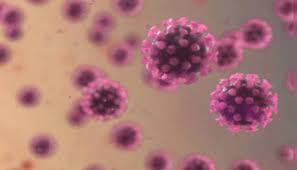Alarming Trend
In recent months, Japan has witnessed a concerning surge in cases of Streptococcal Toxic Shock Syndrome (STSS), commonly known as ‘flesh-eating bacteria’ infection. This unprecedented outbreak has raised alarm bells across the nation and sparked widespread concern. Let’s delve into the underlying reasons behind this disturbing trend and explore potential preventive measures.
Understanding STSS: A Lethal Infection
STSS is a rare but severe bacterial infection caused by certain strains of Streptococcus bacteria. It can lead to rapid tissue destruction, organ failure, and, in some cases, death if not promptly treated. The infection typically enters the body through cuts, wounds, or surgical sites.
Factors Contributing to the Outbreak
1. Environmental Conditions
- Favorable environmental conditions, such as warm and humid weather, provide an ideal breeding ground for bacteria, increasing the risk of infection.
- Poor sanitation and hygiene practices may also facilitate the spread of bacteria in communities.
2. Bacterial Strain Variants
- Emerging strains of Streptococcus bacteria with heightened virulence and antibiotic resistance pose a significant challenge in combating the infection.
- These strains may evade standard treatment protocols, leading to complications and treatment failures.
3. Delayed Diagnosis and Treatment
- Delayed diagnosis or misdiagnosis of STSS can exacerbate the severity of the infection and delay appropriate treatment initiation.
- Lack of awareness among healthcare providers and the general public about the early signs and symptoms of STSS may contribute to diagnostic delays.
Preventive Measures and Public Awareness
1. Enhanced Hygiene Practices
- Promoting regular handwashing with soap and water can help prevent the spread of infectious bacteria and reduce the risk of STSS transmission.
- Encouraging proper wound care and timely treatment of cuts and injuries can minimize the entry points for bacteria into the body.
2. Early Detection and Treatment
- Educating healthcare professionals about the clinical manifestations of STSS and promoting vigilance in diagnosing and treating suspected cases can improve patient outcomes.
- Empowering individuals to seek prompt medical attention upon experiencing symptoms such as fever, rash, and severe pain can aid in early intervention.
Addressing the STSS Threat
The surge in STSS infection cases in Japan underscores the urgent need for proactive measures to contain the outbreak and protect public health. By addressing environmental risk factors, enhancing surveillance efforts, and promoting community awareness, we can mitigate the impact of this deadly infection and safeguard lives.




